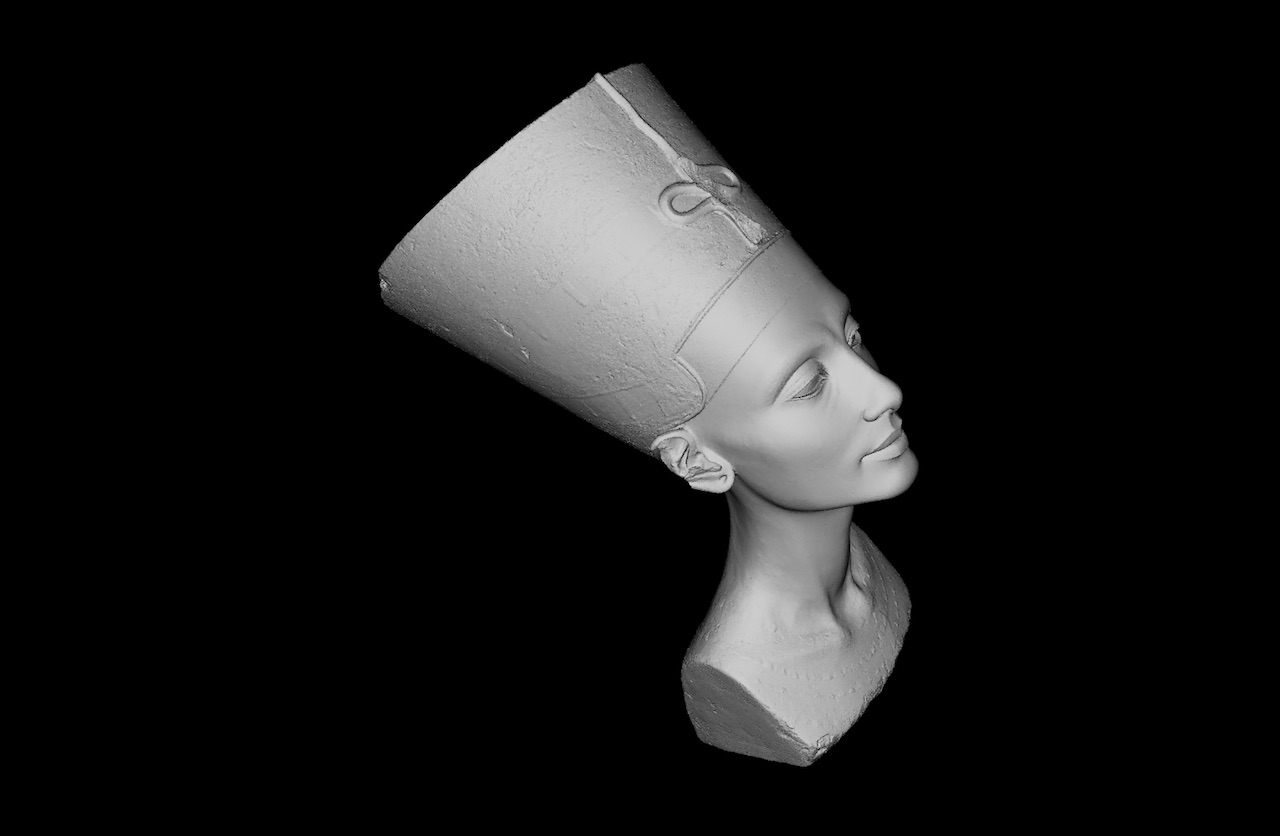It’s not often that a 3D scan makes mainstream news (and in a lot of different news outlets), and it’s even less often that it makes news for a controversy surrounding its resolution. Discussions (more or less heated) about hardware specs are usually the domain of the professional, but rarely the end user, and even more rarely the general public.
I’ve never seen a member of the general public look at a scan and say “what’s the point density on this thing?” But there’s a first time for everything.
The Story
According to the NY Times, two German artists recently scanned the 19-inch-tall bust of Queen Nefertiti in the collection of the Neues Museum in central Berlin, and they scanned it in secret. Next, the artists 3D-printed copies and delivered them to Cairo. Then they released the object in digital form by making the scan available to the general public under a Creative Commons license as open data.
Their goal for the project, called “The Other Nefertiti,” is to counter the idea that Germany could “own” the object simply because German archaeologists discovered it in the early part of the 20th century.
But it hasn’t been issues of public ownership and imperialism—as pressing and knotted as they might be—that are drumming up controversy following the scan. Instead, the media and the general public are more concerned about whether or not the artists were lying about the scan in the first place–and it all comes down to an issue of resolution.
The Resolution Controversy
Let’s backtrack. The artists, Nora al-Badri and Jan Nikolai Nelles, claim that they scanned the 3,000-year-old bust using a chest-mounted Kinect sensor. They say that they performed the scan in two sessions over the course of a day, spending six hours total rotating around the bust.
The quality of the scan leads some to believe that the artists are lying. As Fred Kahl told arts publication Hyperallergic, “from my own extensive experience in scanning with the Kinect,” he said, “I seldom capture a scan with more than 500k triangles in it. The Nefertiti bust has over two million. The Nefertiti scan shows a much finer resolution of scan than any Kinect setup can ever capture. There is simply no way this resolution is possible with a Kinect, PERIOD.”
Furthermore, he notes, scanning the bust in a glass case would present significant problems for a Kinect (or, really, any scanner) since it would refract and reflect light, introducing noise into the scan. Other experts note that the resolution would be possible with photogrammetry, though it’s unlikely that’s the route the artists took.
The artists, for their part, won’t say anything about the process other than to confirm that they did scan the bust.
Why does this matter?
If the artists didn’t actually scan the bust, then where did they get such a high-quality scan? The museum owns one. As Hyperallergic explains, it’s possible that the artists “just hacked into the museum’s servers and constructed an elaborate coverup story.”
This only makes the story more complicated. Who owns a scan of an object? If German laws indicate that the museum owned this scan, how do we prove that the artists copied it illegally? “Of course a scan of the same thing looks the same,” said al-Badri.
Or maybe they scanned one of the replicas that the museum sells.
Either way, it seems the issues of data custody and resolution–usually the domain of the 3D professional–are central to the weird, confrontational art project causing all this controversy. They wanted to get us arguing about who owns a 3D scan, and they succeeded.






